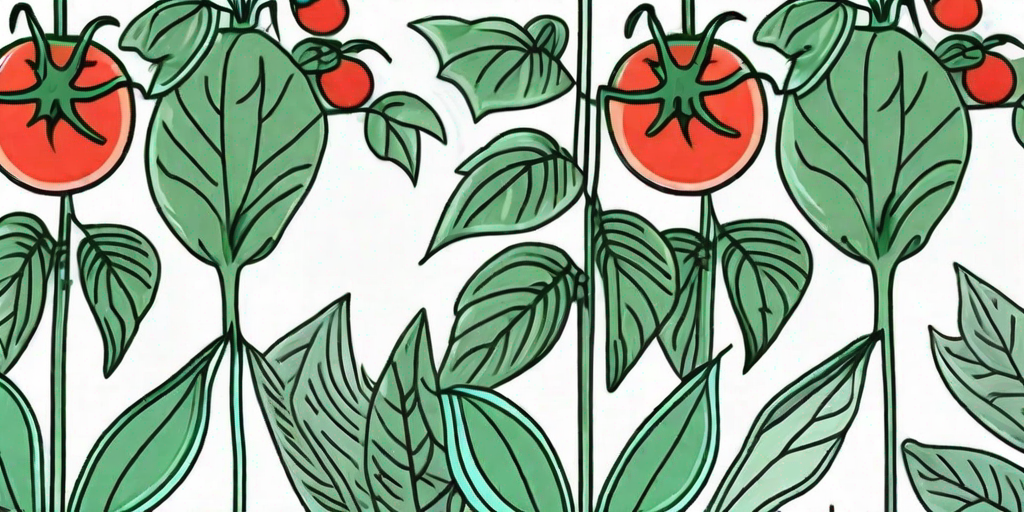
Welcome to the world of tomato plant leaves, where the green is greener and the gorgeous is... well, leafier. If you've ever wondered why your tomato plants aren't quite as verdant as you'd like, or why they've taken on a hue more akin to a Martian landscape than a lush garden, then you're in the right place. We're about to embark on a journey into the heart of the tomato plant, where we'll learn everything there is to know about these green wonders.
Understanding the Basics
Before we dive into the nitty-gritty, let's get some basics out of the way. Tomato plant leaves are the powerhouse of the plant. They're the solar panels that convert sunlight into food, the air conditioners that cool the plant on hot days, and the umbrellas that protect the plant from too much sun. In short, they're pretty darn important.
But not all tomato plant leaves are created equal. There are different types, each with its own unique characteristics. Some are smooth and glossy, others are hairy and rough. Some are deep green, others are light green. Some are large and broad, others are small and narrow. But regardless of their differences, all tomato plant leaves play a crucial role in the plant's survival and productivity.
The Different Types of Tomato Plant Leaves
There are two main types of tomato plant leaves: regular leaf (RL) and potato leaf (PL). Regular leaf plants have leaves that are divided into several segments and have a serrated edge, while potato leaf plants have leaves that are not divided and have a smooth edge. The type of leaf doesn't affect the taste of the tomato, but it can affect the plant's susceptibility to certain diseases.
Regular leaf plants are more common and are often more resistant to diseases than potato leaf plants. However, potato leaf plants are known for their ability to produce large, flavorful tomatoes. So, it's a bit of a trade-off. You can choose the disease-resistant regular leaf plant and get a good yield of average-tasting tomatoes, or you can choose the disease-prone potato leaf plant and get a smaller yield of delicious tomatoes. The choice is yours.
Identifying Problems
Now that we've covered the basics, let's move on to the juicy stuff: identifying problems. Tomato plant leaves can tell you a lot about the health of your plant. If they're yellow, wilting, or spotted, it's a sign that something's not quite right. But don't panic! With a little detective work, you can figure out what's wrong and how to fix it.
Yellow leaves, for example, are often a sign of nutrient deficiency. If your plant's leaves are turning yellow, it might be lacking in nitrogen, potassium, or magnesium. To remedy this, you can add a fertilizer that's high in these nutrients to your soil. Wilting leaves, on the other hand, are usually a sign of overwatering or underwatering. If your plant's leaves are wilting, check the soil. If it's too dry, water your plant. If it's too wet, let it dry out before watering again.
Spotting Diseases
Spotted leaves are a bit trickier to diagnose. They could be a sign of a fungal, bacterial, or viral disease. The most common diseases that affect tomato plant leaves are early blight, late blight, and septoria leaf spot. Early blight causes dark spots with concentric rings, late blight causes gray spots with a white edge, and septoria leaf spot causes small black spots. If you notice any of these symptoms, remove the affected leaves and treat your plant with a fungicide.
Remember, prevention is better than cure. To prevent diseases, make sure your plants have good air circulation, avoid watering the leaves, and rotate your crops every year. And if all else fails, don't be afraid to start over. Sometimes, the best thing you can do for your garden is to pull out a sick plant and replace it with a healthy one.
FAQs
- Why are my tomato plant leaves curling?
Leaf curling can be caused by several factors, including temperature extremes, improper watering, and certain diseases. If your plant's leaves are curling, check the temperature and moisture levels in your garden. If they're within the normal range, your plant might be suffering from a disease such as leaf curl virus.
- What are the brown spots on my tomato plant leaves?
Brown spots are usually a sign of a fungal disease such as early blight or septoria leaf spot. If you notice brown spots on your plant's leaves, remove the affected leaves and treat your plant with a fungicide.
- Can I eat the leaves of my tomato plant?
No, tomato plant leaves are not edible. They contain a toxic compound called tomatine that can cause nausea, vomiting, and diarrhea if ingested in large amounts. So, stick to the tomatoes!
Conclusion
And there you have it, a comprehensive guide to tomato plant leaves. From understanding the basics to identifying problems, we've covered it all. So, the next time you're in your garden, take a moment to appreciate the green and gorgeous leaves of your tomato plants. They're not just pretty to look at, they're also working hard to produce those juicy, delicious tomatoes you love so much.
Remember, gardening is a journey, not a destination. There will be ups and downs, successes and failures. But with a little patience, a lot of love, and this handy guide, you'll be well on your way to growing the greenest, most gorgeous tomato plants in the neighborhood. Happy gardening!











